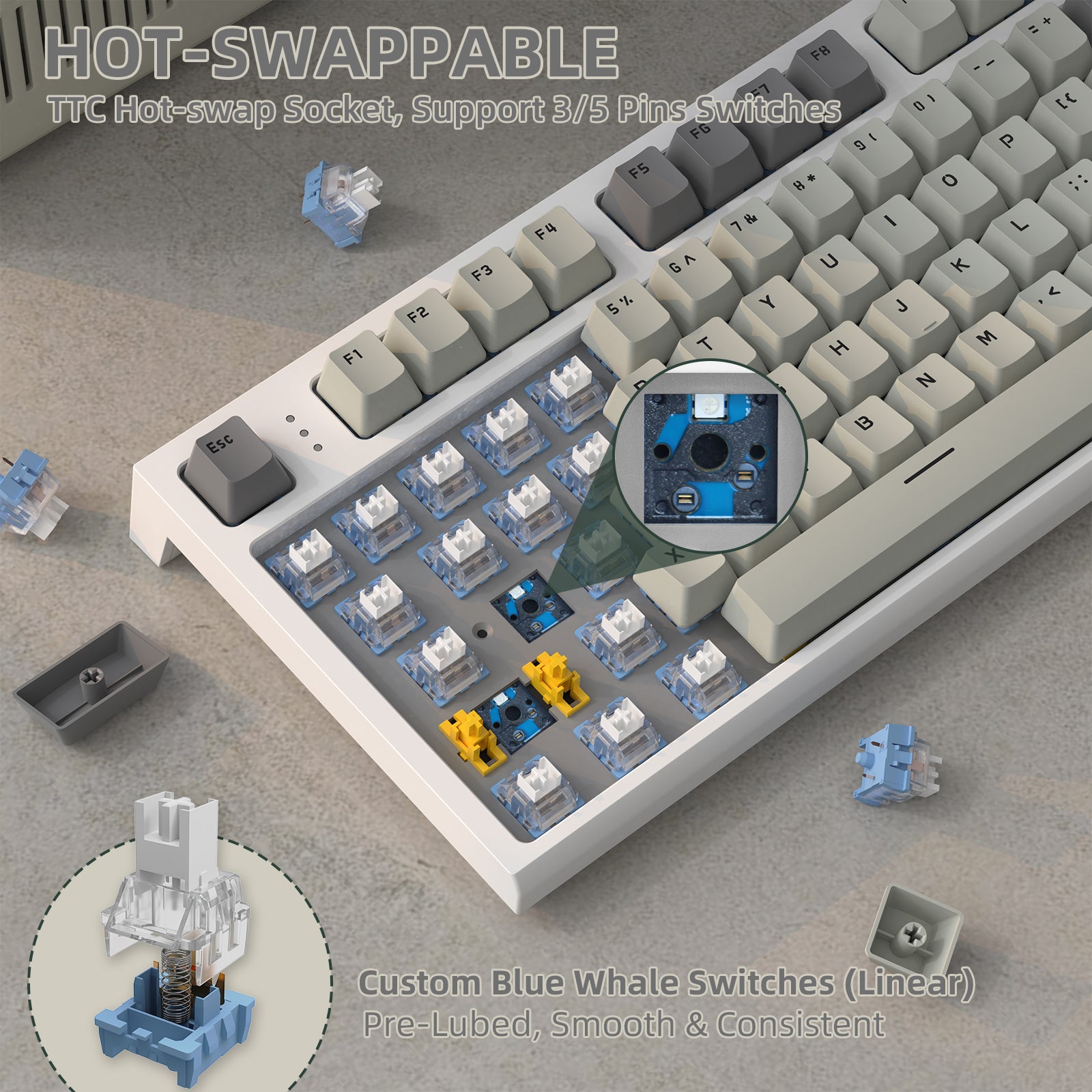Unlock the Secrets of Tactile Keyboards: Why You Need One Today!
In a world where typing is an essential part of our daily lives, the choice of keyboard can significantly impact our productivity and comfort. Tactile keyboards have surged in popularity among gamers, writers, and programmers alike, thanks to their unique feel and responsive feedback. Unlike traditional membrane keyboards or even linear switches, tactile keyboards provide a distinct bump at the actuation point, allowing users to know when a key has been registered without needing to bottom out. Have you ever found yourself frustrated with missed keystrokes during a critical moment? If so, you might want to delve into the world of tactile keyboards, which are designed to enhance your typing experience in ways you never thought possible.

Understanding Tactile Keyboards
A tactile keyboard is a type of mechanical keyboard that uses switches designed to provide tactile feedback when a key is pressed. This feedback consists of a noticeable bump that indicates the actuation point, making it easier for typists to recognize when their input has been registered. Tactile switches differ from linear switches, which have a smooth keystroke with no tactile feedback, and clicky switches, which offer both tactile feedback and an audible click. Each of these switch types caters to different preferences; however, tactile switches strike a balance by providing a satisfying feel without the noise associated with clicky switches. This makes them a popular choice for both quiet office environments and intense gaming sessions.
Key Features of Tactile Keyboards
Tactile keyboards boast several key features that enhance the typing experience. One of the standout characteristics is the tactile feedback, which allows users to feel the actuation point, reducing the likelihood of accidental keystrokes. The actuation force, or the amount of pressure required to register a key press, typically varies between tactile switches, ranging from light to heavy, which can cater to different typing styles. Additionally, the key travel distance—the distance a key must travel before it actuates—plays a crucial role in comfort. Most tactile keyboards have a travel distance of around 4mm, which strikes a balance between speed and comfort. Lastly, sound level is an important consideration; while tactile keyboards are quieter than their clicky counterparts, they still produce a satisfying sound that many users find appealing.
Benefits of Using a Tactile Keyboard
The advantages of using a tactile keyboard are numerous. First and foremost, they can significantly improve typing speed and accuracy. The tactile bump provides a physical cue that helps typists know when to release a key, reducing the occurrence of mistakes. Additionally, many users report reduced finger fatigue during long typing sessions, thanks to the ergonomic design and satisfying feedback these keyboards offer. A friend of mine, an avid programmer, switched to a tactile keyboard and noticed an immediate improvement in her productivity. She claimed that the tactile feedback allowed her to focus more on her code rather than the mechanics of typing. Overall, tactile keyboards are designed with user comfort in mind, making them an excellent choice for anyone who spends considerable time typing.
Choosing the Right Tactile Keyboard for You
When selecting a tactile keyboard, it’s essential to consider your specific needs and preferences. Start by evaluating the size of the keyboard—do you prefer a full-sized keyboard with a number pad, or would a compact layout better suit your desk space? Next, look into the different switch types, as each offers a unique feel and sound profile. For instance, some tactile switches require more actuation force, which may be preferable for users who type with more force. Additionally, consider any extra features that might enhance your experience, such as customizable backlighting, programmable keys, and detachable cables for easy transport. Reading user reviews and testing different models can help you find the perfect tactile keyboard tailored to your typing style.
Enhancing Your Typing Experience with Tactile Keyboards
In summary, tactile keyboards offer a unique blend of comfort and efficiency that can transform your typing experience. From their distinctive feedback to their customizable features, these keyboards cater to a wide range of users, including gamers, writers, and programmers. By considering your typing needs and exploring the various options available, you can make an informed decision that enhances your productivity and comfort. If you've been struggling with your current keyboard, it may be time to embrace the tactile revolution and discover the benefits for yourself.








